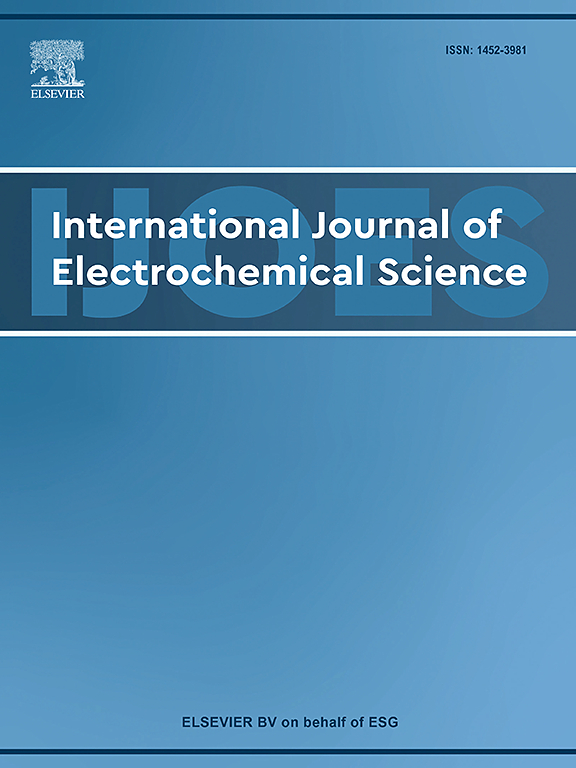Early detection of internal short circuit faults in lithium-ion battery packs using dynamic time warping and Gaussian mixture clustering
IF 2.4
4区 化学
Q4 ELECTROCHEMISTRY
International Journal of Electrochemical Science
Pub Date : 2025-06-25
DOI:10.1016/j.ijoes.2025.101107
引用次数: 0
Abstract
Internal short circuit (ISC) faults are a primary trigger for thermal runaway in energy storage lithium-ion battery systems. Timely detection of ISC faults at their early stage can effectively prevent severe safety incidents, thereby ensuring the safe and stable operation of battery energy storage systems. To address this challenge, this study proposes a novel early ISC identification method for lithium-ion battery packs based on dynamic time warping (DTW) sequences and Gaussian mixture model (GMM) clustering. First, the median terminal voltage curve is derived from sorted terminal voltage measurements, serving as a reference representing the normal state of cells within the battery pack. Subsequently, sliding time windows are applied to extract subsequences of the median terminal voltage and individual cell terminal voltages. On this basis, the DTW sequences of each cell are computed and utilized as an indicator to characterize abnormal battery behavior, thereby amplifying the discrepancy between early ISC-affected cells and normal ones. Furthermore, an automatic early ISC fault detection model is developed using a GMM-based clustering algorithm to distinguish between normal and early ISC cells within the battery pack. Experimental validation and analysis under various early ISC fault scenarios with different severity levels demonstrate that the proposed method achieves accurate identification of early ISC cells when the short-circuit resistance is less than or equal to1000 Ω.
基于动态时间扭曲和高斯混合聚类的锂离子电池组内部短路故障早期检测
内部短路(ISC)故障是储能锂离子电池系统热失控的主要诱因。及时发现ISC故障的早期阶段,可以有效防止严重的安全事故,从而保证电池储能系统的安全稳定运行。为了解决这一挑战,本研究提出了一种基于动态时间规整(DTW)序列和高斯混合模型(GMM)聚类的锂离子电池组早期ISC识别方法。首先,从排序后的终端电压测量值中得出中位终端电压曲线,作为代表电池组内电池正常状态的参考。随后,应用滑动时间窗提取中位端电压和单个单元端电压的子序列。在此基础上,计算每个电池的DTW序列,并将其作为表征电池异常行为的指标,从而放大早期受iscc影响的电池与正常电池之间的差异。在此基础上,建立了基于gmm聚类算法的早期ISC故障自动检测模型,以区分电池组内正常和早期ISC单元。在不同严重程度的早期ISC故障场景下的实验验证和分析表明,当短路电阻小于等于1000 Ω时,所提出的方法能够准确识别早期ISC细胞。
本文章由计算机程序翻译,如有差异,请以英文原文为准。
求助全文
约1分钟内获得全文
求助全文
来源期刊
CiteScore
3.00
自引率
20.00%
发文量
714
审稿时长
2.6 months
期刊介绍:
International Journal of Electrochemical Science is a peer-reviewed, open access journal that publishes original research articles, short communications as well as review articles in all areas of electrochemistry: Scope - Theoretical and Computational Electrochemistry - Processes on Electrodes - Electroanalytical Chemistry and Sensor Science - Corrosion - Electrochemical Energy Conversion and Storage - Electrochemical Engineering - Coatings - Electrochemical Synthesis - Bioelectrochemistry - Molecular Electrochemistry

 求助内容:
求助内容: 应助结果提醒方式:
应助结果提醒方式:


